Siphons for double sink: features, types and tips for choosing
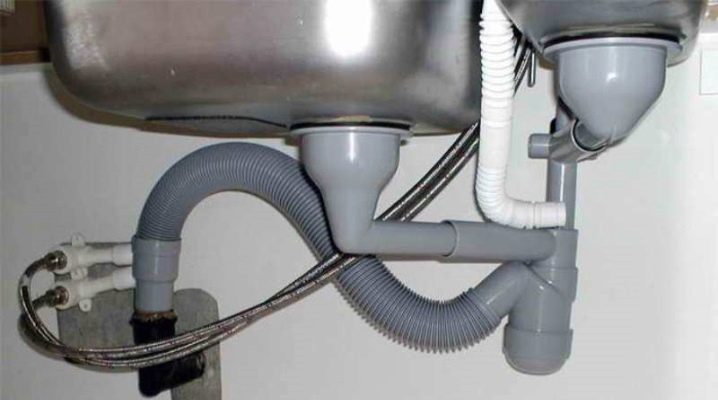
The sanitary ware market is constantly replenished with a variety of new products. In some cases, when replacing a device, you have to pay attention to the component parts, since the old ones will no longer fit. Nowadays, double sinks are especially popular, and they are increasingly seen in kitchens. This is because housewives value comfort and efficiency first of all - after all, while water is collected in one part, the other is used for rinsing. However, for such a two-section sink, a special siphon is required. How to choose it correctly and what to look for - we'll talk in our article.
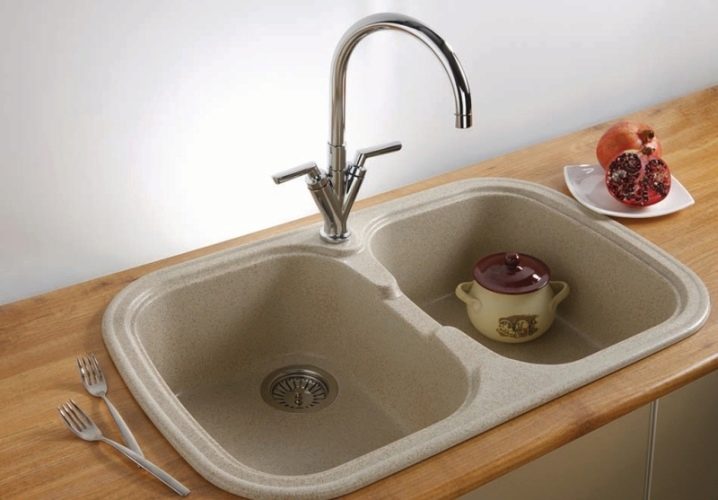
What is it and what is it for?
In cases where the kitchen sink has 2 drain holes, a double sink siphon is required. It differs in that it has 2 adapters with grids, and, in addition, an additional pipe connecting the drains. The siphon itself is a tube that has a bend or a sump. This tube is attached to the bottom of a bathtub or sink. It can also represent several pipes that go to the sump - this is a branched siphon. The multilevel siphon is attached to the sump at different heights.
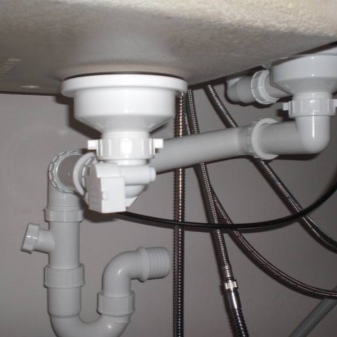
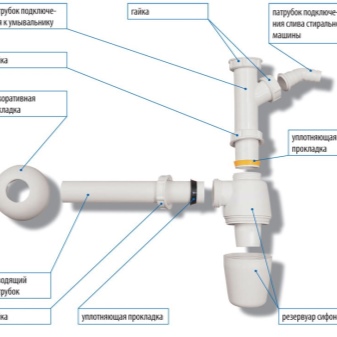
The role of the siphon is very important. It performs quite serious functions. For example, due to this detail, the passage into the room of the sewer smell is blocked, while the water goes into the sewer. And also a siphon helps prevent pipe clogging.
All this becomes possible due to the settling tank available on it or the bend of the tube, in which part of the passing water remains. It turns out a kind of shutter, thanks to which sewage odors do not penetrate into the room. And also a siphon in a double sink can trap foreign objects, which are easy to remove, preventing them from entering the pipe.

Manufacturing material
Today, the choice of a siphon for both the bathroom and the sink is not difficult. All sorts of varieties can be found on the market, and a wide variety of materials are used for manufacturing. Nevertheless, you can mainly find products made of brass, bronze, as well as copper and polypropylene products.
Most often, users pay attention to plastic siphons. And this is not surprising, because the price for them is very democratic, and the quality and service life are very decent. However, each of the materials has its own pros and cons, therefore, when choosing a product in each individual case, you need to focus on your own requests and preferences.
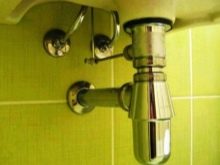
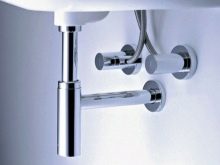

For example, materials made of metal are in much less demand than plastic counterparts, and are often purchased in cases where it is necessary to withstand a certain design style of the room.
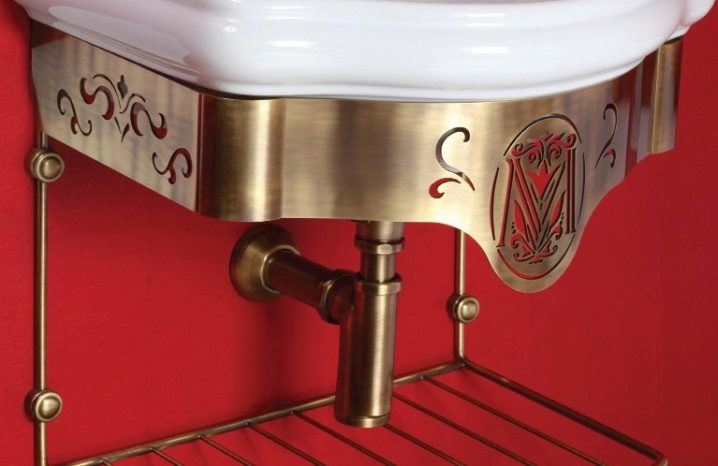
Double siphons made of plastic are lightweight, but at the same time they are quite strong and reliable, which is very convenient for installation work. Products made from this material are not afraid of the effects of chemicals, which means that they are easy to clean with the help of special tools, without fear for safety. In addition, deposits do not linger on the walls of such pipes. At the same time, there are nuances of use, for example, plastic siphons cannot be cleaned with boiling water, since they do not have resistance to thermal influences, and this process can spoil the material.
Products made of chrome-plated brass are in good demand in some cases. This is due to their aesthetically pleasing appearance; the pipes may even be visible. In the bathroom, this type of siphon looks quite advantageous, outwardly combining well with a variety of metal elements. Among the minuses, it is possible to note the lack of strength, therefore, the nearby sharp objects can damage the product.
Also, chrome-plated brass needs regular maintenance, otherwise it will lose its appearance and look untidy.
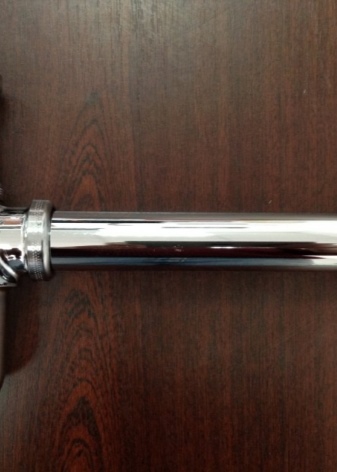
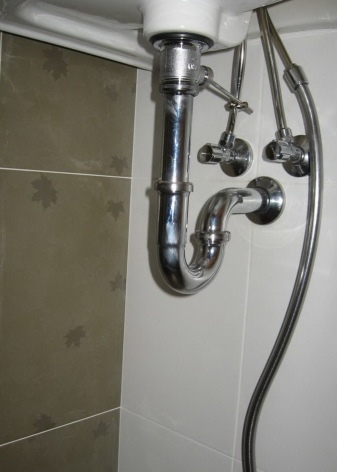
Main varieties
As for the varieties, siphons can be divided into bottle, corrugated, with overflow, with a jet gap, hidden, pipe and flat. Let's consider the presented types in more detail.
- Bottle siphon is a rigid product that unscrews at the bottom for cleaning. In this removable element, large and heavy objects settle, which for any reason have fallen into the drain. The water seal is created by the water that is constantly inside.
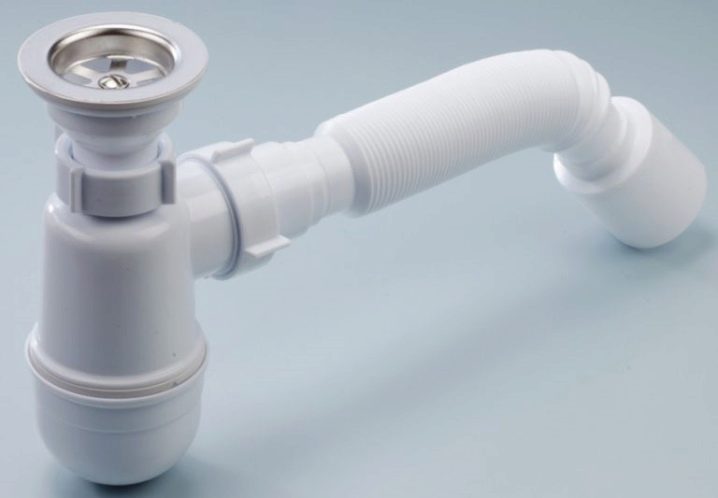
- Corrugated siphon is a flexible tube with a special bend, in which a water seal is formed. This part is fixed, and the rest of the pipe can be bent, depending on the need. The disadvantage of corrugated products is that they have an uneven inner surface, which allows debris and dirt to be retained, and, accordingly, require periodic cleaning.
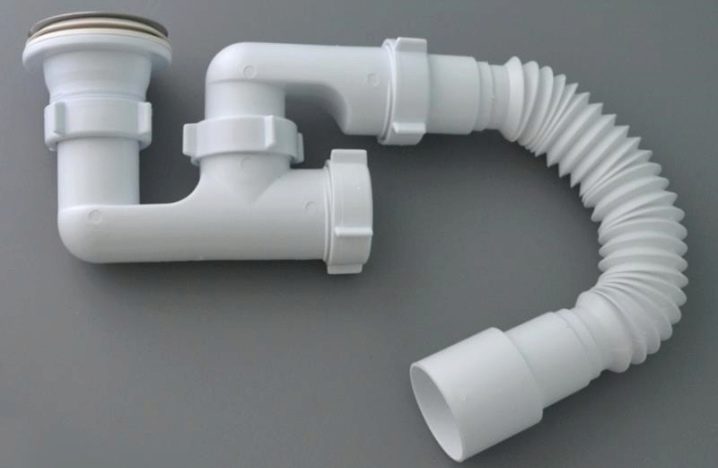
- Siphon with overflow differs in that it has an additional element in the design. It is the overflow pipe that runs directly from the sink to the water drain hose. These products are more complex, however, when using them, the ingress of water on the floor is excluded.
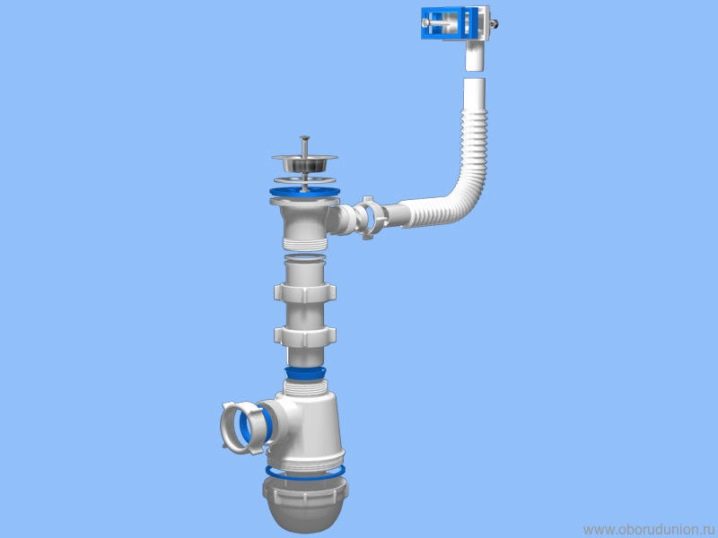
- Between water outlet and water inlet in siphons with jet break there is a gap of a couple of centimeters. This is necessary so that harmful microorganisms cannot get from the sewer into the sink. Most often, such designs are found in catering establishments.
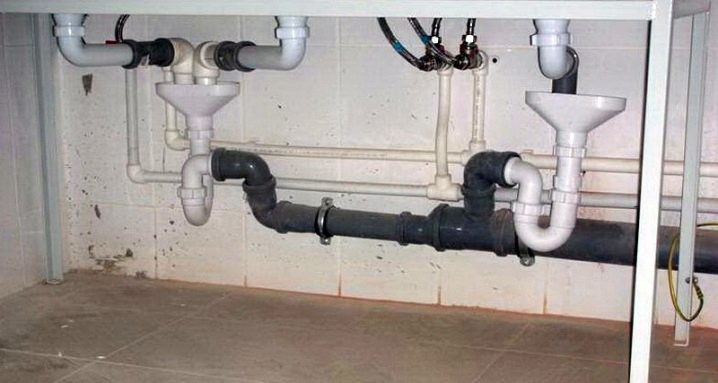
- Concealed siphons can be of any design. The difference is that they are not intended for open spaces. Accordingly, products must be closed in walls or special boxes.
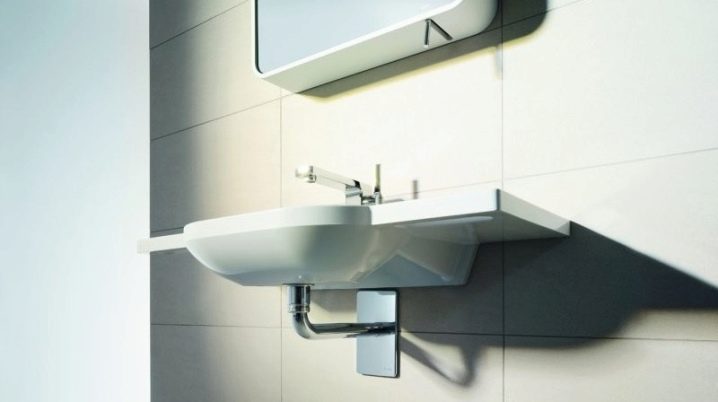
- The pipe structures are made in the shape of the letter S. The difference is that they are extremely compact. They can be either single-level or two-level. However, due to the design, cleaning in this case is quite problematic.
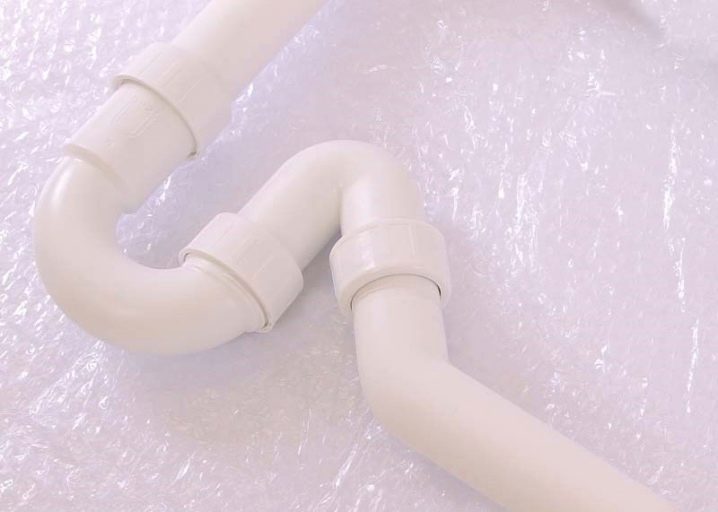
- Flat siphons indispensable in cases where there is very little free space for the product. They differ in the arrangement of elements horizontally.
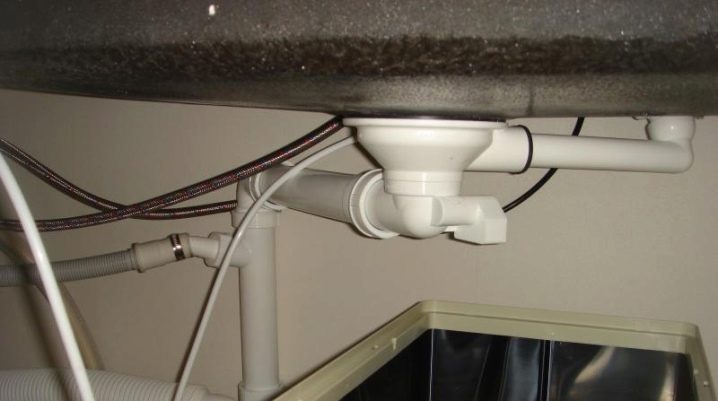
Specifications
Among the distinctive characteristics of double siphons, one can single out not only their useful functions, which we noted above. It must be said that this is an indispensable option in cases where a double sink is installed in the kitchen.
It should be noted that products made from a number of materials can be located openly, and this fact absolutely does not harm the design of the room. These are siphons made of copper or brass. This makes it possible not to spend money on special furniture that hides pipes.
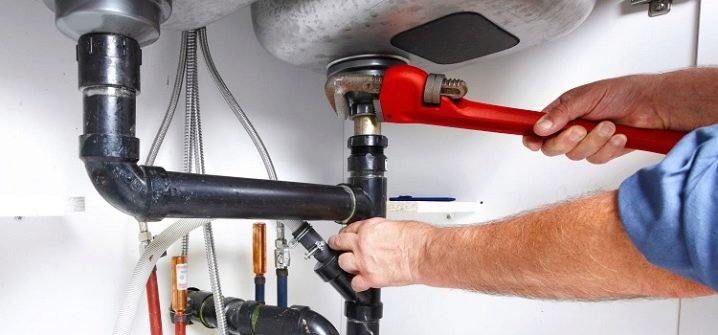
Installation
As for the installation work, usually in the case of two-level siphons, they do not cause difficulties, and the owner of the room can perform the installation on his own. The point to consider is the number of connections to each of the products. In the case where the kitchen has a double sink, as well as if a second drain is provided, a siphon with two bowls is ideal. First of all, it is necessary to compare the dimensions of the product and the space planned for it. The inlet of the sewer pipe is prepared using an O-ring or a rubber plug.
So, before installing a double siphon, you need to fix the mesh on each of the drains, after which the pipes are fixed there with nuts.If the design is overflow, the hose is connected to the overflow holes. Further, the branch pipes are attached to the sump.
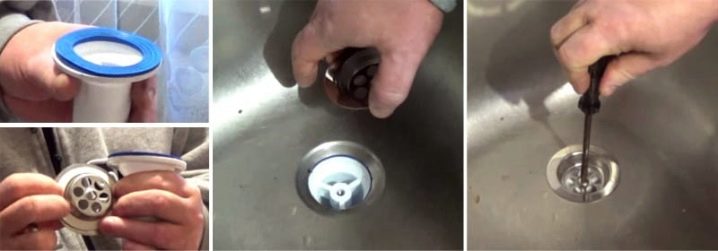
The sump itself is fixed to the joint pipe using rubber gaskets and special screws. To make everything as tight as possible, experts recommend using a silicone sealant that does not contain acids. At the end of the work, the outlet pipe is connected to the sewer.
To check the correctness of the work done, you need to turn on the water. If it goes well, then the siphon is installed correctly.
See below for more details.













The comment was sent successfully.